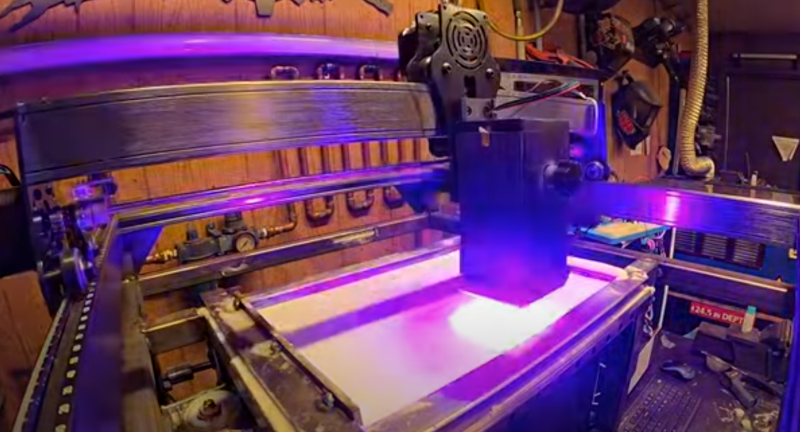If you haven’t noticed, diode laser engraver/cutters have been getting more powerful lately. [Cranktown City] was playing with an Atomstack 20 watt laser and wondered if it would sinter sand into glass. His early experiments were not too promising, but with some work, he was able to make a crude form of glass with the laser as the source of power. However, using glass beads was more effective, so he decided to build his own glass 3D printer using the laser.
This isn’t for the faint of heart. Surfaces need to be flat and there’s aluminum casting and plasma cutting involved, although some of it may not have been necessary for the final construction. The idea was to make a system that would leave a layer of sand and then put down a new layer on command. This turned out to be surprisingly difficult.
We were impressed with the many ideas he tried to get the platform just right. The ultimate solution was extremely simple, but that’s how that usually works, isn’t it? You try all sorts of complex things until you strike upon something simple.
We always enjoy projects where you can see the steps to success including the failed attempts. The machine looks decidedly Rube Goldberg. But how does it work? Well, he did get a recognizable benchy eventually, but not right away. Perfect? No, but we remember when early 3D printers only did a little better.
We’re impressed. It took a broad range of skills to pull this off and we hope he will continue to refine the work and perhaps others will, too. This isn’t the first time we’ve seen this trick, but earlier attempts haven’t been as robust. We even saw a 2D version back in 2016.
















Honestly speaking it’s just SLS with glass powder. Due to nature of material I don’t think there’s much room for further improvement. For example you cannot soak your print with lower melting point temperature material to reinforce part. Works with metals, doubt if it’s possible with glass.
You could impregnate it with a two-part or UV-cure resin, if it had a low enough viscosity.
There are also a wide variety of glass chemistries. Mixing a variety of glass spheres with different glass transition temperatures could provide interesting results…
There are metals that wet glass, particularly hot glass, so if you can find one with a lower melting point than the glass, you’ve got something interesting.
Oh how about lead?